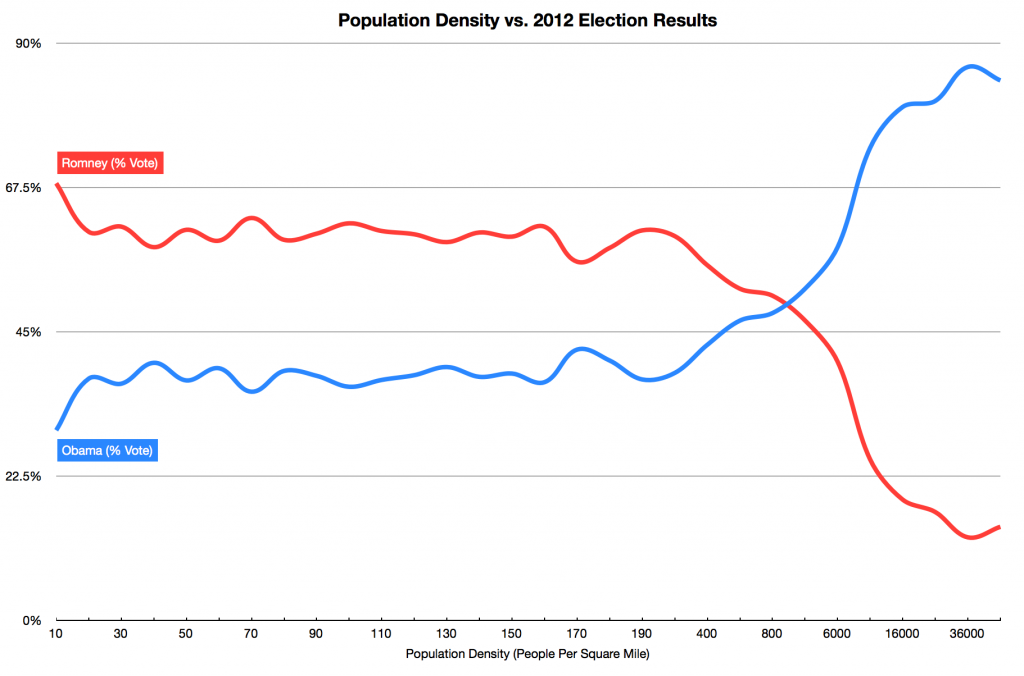The Strange Data Behind How We Vote
When someone votes for someone, believes a certain deity, or thinks a certain athlete is the GOAT, they think it’s totally logical and their own choice. The data continues to show that while we certainly have agency, there are major forces pushing us in certain directions.

Is Population Density the Key to Understanding Voting Behavior? | by Dave Troy | Medium
At about 800 people per square mile, people switch from voting primarily Republican to voting primarily Democratic. Put another way, below 800 people per square mile, there is a 66% chance that you voted Republican. Above 800 people per square mile, there is a 66% chance that you voted Democrat. A 66% preference is a clear, dominant majority.
And:
Perhaps the biggest question of all, though, is whether pandering to rural voters is a viable strategy for the future. Arguably, it is not. Globally, cities are growing rapidly as people move from rural to urban areas in search of opportunity. By 2030 it is estimated that cities will grow by 590,000 square miles and add an additional 1.47 billion people.
And finally:
Likewise, the Democratic party would be wise to address economic insecurity being felt in rural areas. And not by pandering to gun owners and those afraid of bathroom bogey-people: come up with a plan for how rural America will manage a prosperous transition from an agricultural past to a mercantile, information-driven future. The fact that this change is happening anyway and without a plan is perhaps the biggest source of anxiety in these areas.
I really find it interesting looking at stuff like this. When it comes ti things like religion, politics, and sports, we all think that we are unique and come to our beliefs objectively and on our own accord (maybe a little less about sports), but the data shows over and over that for most of these things someone could ask totally non-political and non-religious questions about you and make a really good guess on what religion your practice (if at all) and who you voted for in the last election.
It’s not 100%, of course, but seeing things like this serve as a good reminder that we are inclined to believe certain things based on our environment, even if we can’t see it for ourselves.
